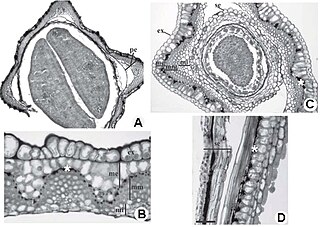Phytomelanin
Phytomelanin (phytomelan) is a black, inert, organic material that forms a crust-like covering of some seeds, commonly found in Asparagales and Asteraceae but uncommon in other taxonomic groupings. Phytomelanin is found in most families of the Asparagales (although not in Orchidaceae). It is mechanically hard and forms a resistant substance, although it is more pliable in the developing fruit, hardening later. Chemically it appears to be a polyvinyl aromatic alcohol, and is thought to be exuded from the hypodermis. It appears to provide resistance to insect predators and desiccation.[1][2][3]
You can help expand this article with text translated from the corresponding article in Spanish. (February 2016) Click [show] for important translation instructions.
|
